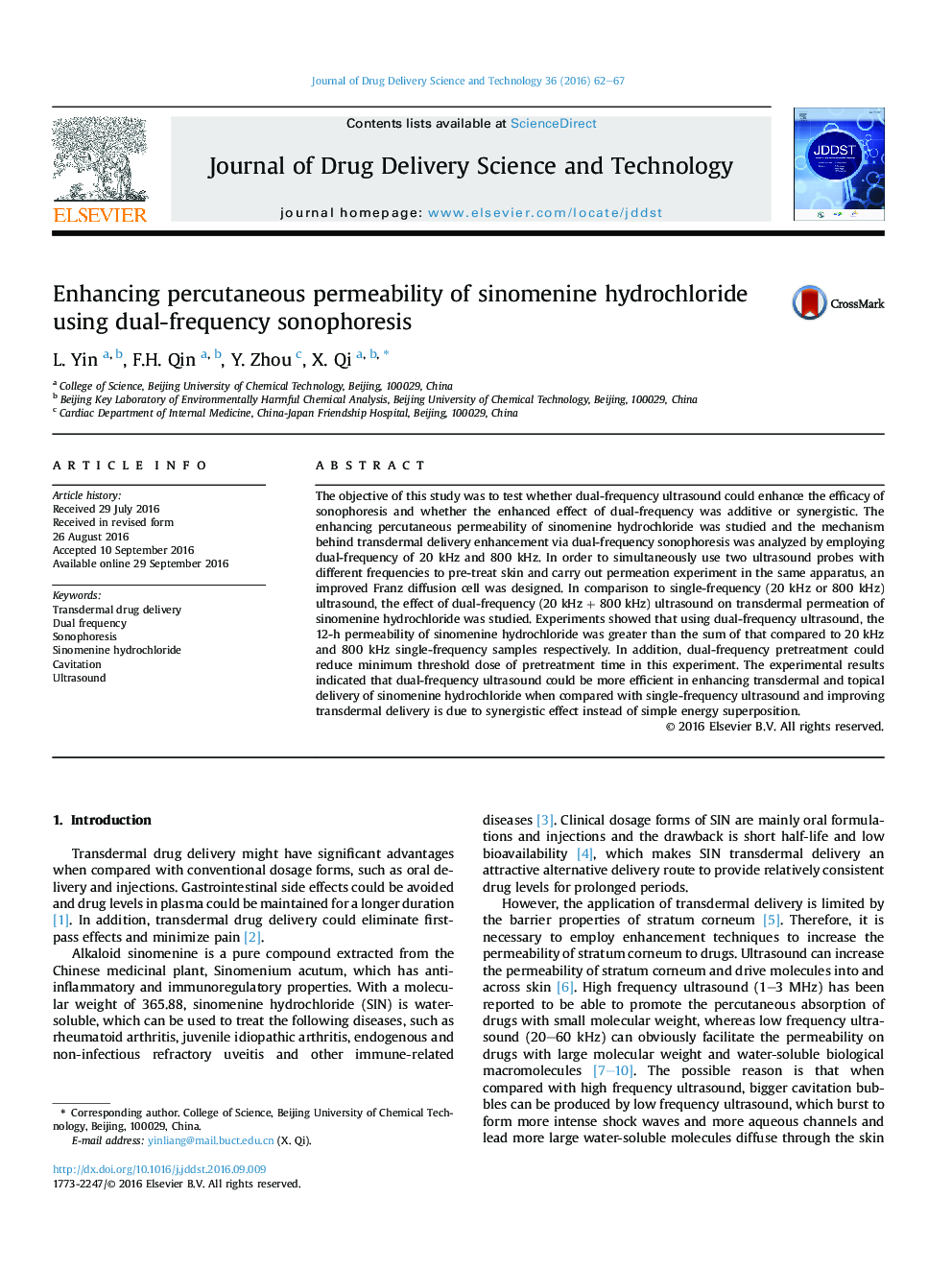| Article ID | Journal | Published Year | Pages | File Type |
|---|---|---|---|---|
| 5548233 | Journal of Drug Delivery Science and Technology | 2016 | 6 Pages |
The objective of this study was to test whether dual-frequency ultrasound could enhance the efficacy of sonophoresis and whether the enhanced effect of dual-frequency was additive or synergistic. The enhancing percutaneous permeability of sinomenine hydrochloride was studied and the mechanism behind transdermal delivery enhancement via dual-frequency sonophoresis was analyzed by employing dual-frequency of 20 kHz and 800 kHz. In order to simultaneously use two ultrasound probes with different frequencies to pre-treat skin and carry out permeation experiment in the same apparatus, an improved Franz diffusion cell was designed. In comparison to single-frequency (20 kHz or 800 kHz) ultrasound, the effect of dual-frequency (20 kHz + 800 kHz) ultrasound on transdermal permeation of sinomenine hydrochloride was studied. Experiments showed that using dual-frequency ultrasound, the 12-h permeability of sinomenine hydrochloride was greater than the sum of that compared to 20 kHz and 800 kHz single-frequency samples respectively. In addition, dual-frequency pretreatment could reduce minimum threshold dose of pretreatment time in this experiment. The experimental results indicated that dual-frequency ultrasound could be more efficient in enhancing transdermal and topical delivery of sinomenine hydrochloride when compared with single-frequency ultrasound and improving transdermal delivery is due to synergistic effect instead of simple energy superposition.
